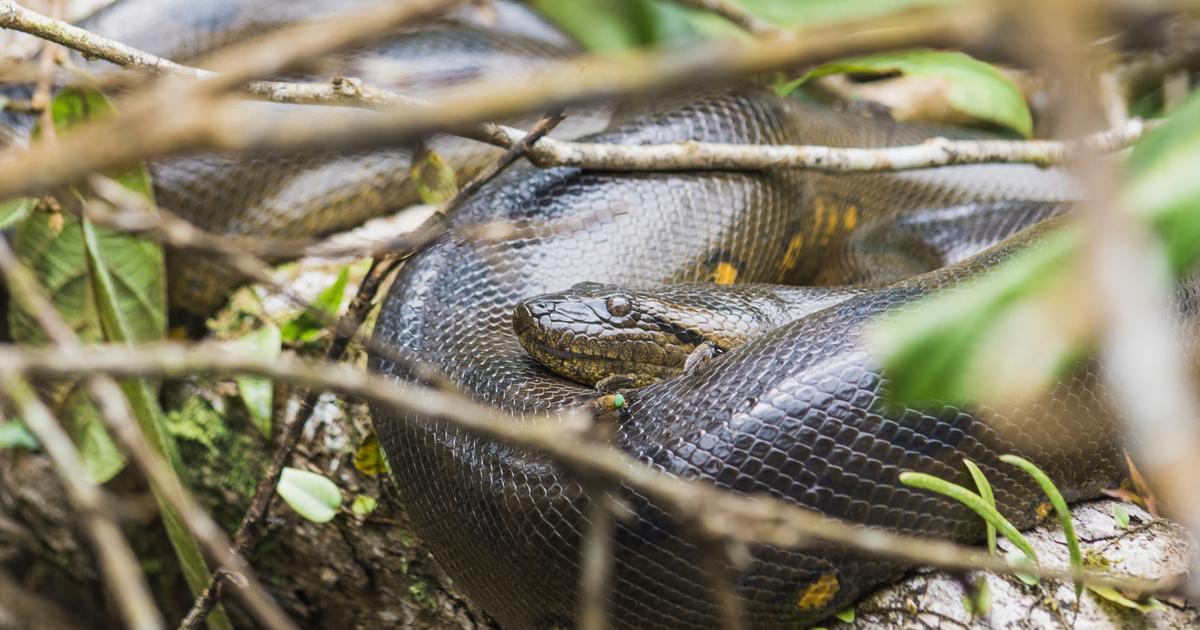Wouldn't it be elegant if the wheat were to defend itself against the fungal attack?
He has what it takes, but the natural defense weakens over time.
The Federal Association of German Plant Breeders therefore wants to develop wheat that keeps fungi in check over the long term.
This would specifically deactivate the gene in the plant's genome that causes the immune system to weaken.
Icon: enlarge
Wheat field
Photo: Ina Fassbender / afp / Getty Images
Two scientists were awarded the Nobel Prize in Chemistry in October for the tool required for this, the Crispr / Cas9 gene scissors.
There is "enormous power" in the method that "affects us all," said the Nobel Committee's justification: "It has not only revolutionized basic research, it has also led to innovative crops."
The wheat project is deliberately intended to fuel the debate surrounding this decision.
For German fields, however, the resistant wheat would be too innovative.
In 2018, the European Court of Justice classified crops that were grown using the new methods as genetically modified organisms - and they are not grown in Germany.
The wheat project is deliberately intended to fuel the debate surrounding this decision.
The discussion must be conducted.
The general rejection of genetic engineering methods, argue many scientists, prevents tailor-made solutions for environmental protection and agriculture.
In the meantime, parts of the Greens have also recognized this, previously the condemnation of genetic engineering was anchored in the genetic makeup of the eco-party.
In new methods such as Crispr, it is now said, for example in a contribution to the debate on the new basic program, that there is "a great opportunity for sustainable agriculture".
Genetic engineering carries risks.
Don't use them, too.
Heartily
Yours Julia Koch
(
Feedback & suggestions?
)
Abstract
My reading recommendations this week:
Scientists from the Massachusetts Institute of Technology have developed a hydrogel modeled on camel skin.
The researchers hope that the new material could be used as a cooling layer for drugs or food.
Many children's rooms served less as homeschooling classrooms than as gamblers' den during school closings: the increase in video game time worries parents and educators.
Norwegian researchers are now giving the all-clear - at least a little.
Frequent daddling did not lead to psychological abnormalities in the children they tested.
In 2005, Viennese archaeologists found a child's grave during excavations near the Austrian Krems-Wachtenberg - hidden under the shoulder blade of a mammoth.
The genetic analysis is now complete: The find from the Paleolithic is probably the world's oldest evidence of the birth of identical twins.
Swedish, Finnish and Russian wolves are apparently closely related, as Swedish researchers deduce from DNA comparisons of more than 200 animals.
And unlike other wolf populations in Europe, their genetic makeup has barely mixed with that of domestic dogs.
Is the corona pandemic a war, a tsunami, a bush fire?
I reported on the findings of linguist Elena Semino in an earlier newsletter.
Now the scientist from Lancaster University explains in a public online seminar which metaphors best describe the fight against the virus and why it is important to choose them carefully.
Quiz*
1. Who was awarded the 2020 Nobel Prize in Chemistry?
2. What was the world's first genetically modified plant?
3. What is red genetic engineering?
* You can find the answers at the bottom of the newsletter.
Picture of the week
Icon: enlargePhoto: Andres M. Dominguez / 1
The
net spun by Tetranychus urticae measures
around four square meters
.
Hundreds of thousands of spider mites find protection from rain, wind and predators in the delicate structure.
The mites themselves feed on sap - such as cucumbers, tomatoes, strawberries, grapes and apples.
footnote
23 percent of
the natural habitat of mammals, birds and amphibians could have been lost on average by the year 2100;
18 percent have already disappeared.
The main reasons are climate change, agriculture and urbanization.
This is what researchers at the University of Cambridge conclude from analyzes of the changed geographical distribution of 16,919 species between the year 1700 and today.
SPIEGEL + recommendations from science
Immunology: The first corona vaccine is about to be approved - the technology can also be used to develop drugs against cancer
Health: This is how you strengthen yourself against the coronavirus
Animals: Thanks to new technology, researchers are getting closer than ever to the feared great white sharks off the US east coast
Archeology: Researchers argue over the mysterious Nebra Sky Disc
* Quiz answers
1) The biochemists Emmanuelle Charpentier and Jennifer Doudna received the Nobel Prize for Chemistry for developing the so-called Crispr / Cas9 gene scissors. Charpentier heads the Max Planck Research Center for the Science of Pathogens in Berlin, Doudna is a professor at the US University of Berkeley.
2) tobacco! In 1983, Belgian and American researchers smuggled a foreign gene into tobacco plants. In 1994, the so-called anti-slush tomato came onto the market in the USA, in which the blocking of a gene was supposed to provide extra firmness and more flavor.
3) Genetic engineering methods for use in medicine are summarized under red genetic engineering, for example for the development of drugs or therapies.














